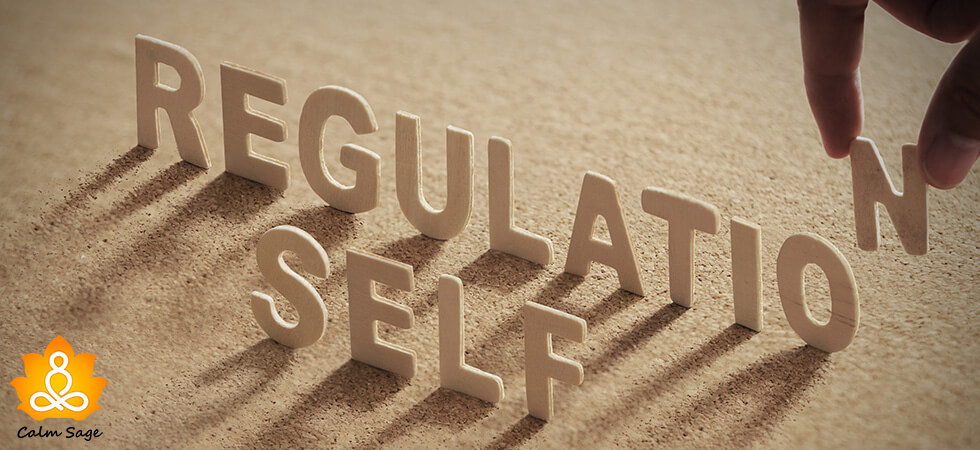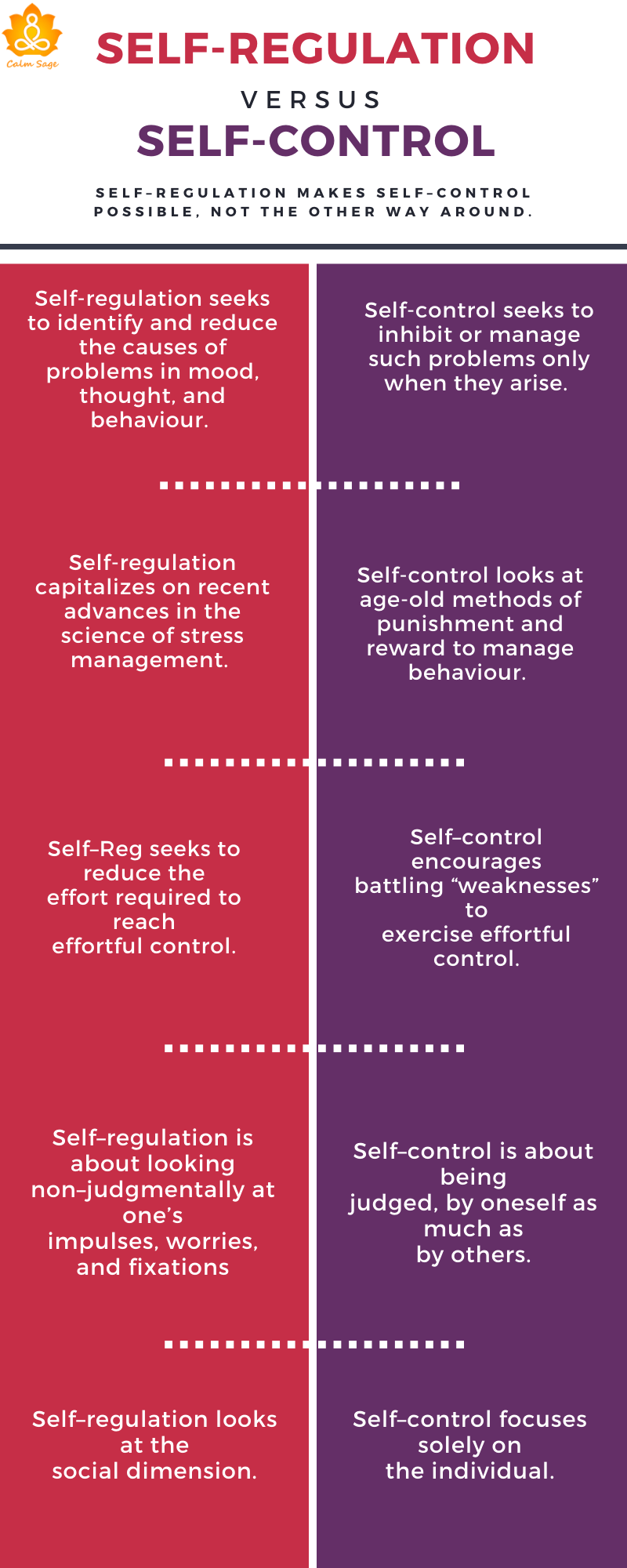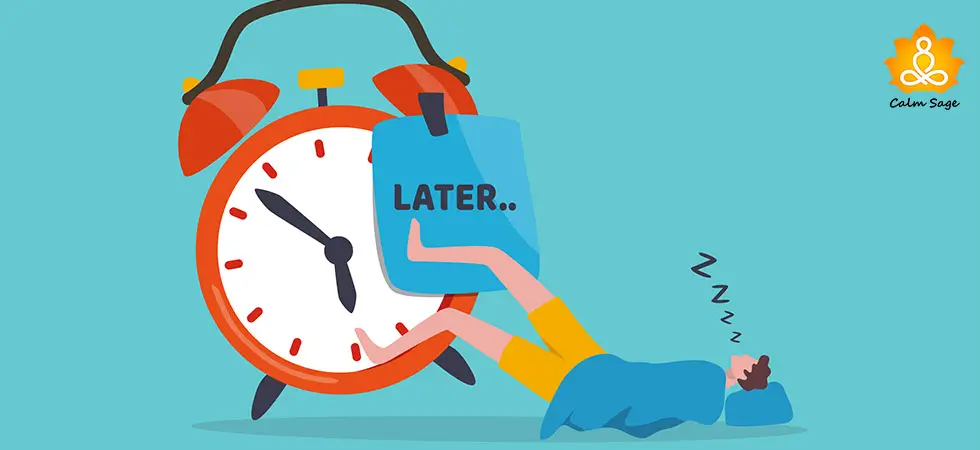15 Self-Regulation Techniques For Adults and Children, Psychologist Approved

You get up every morning with an alarm beep, sweat some carbs off, prepare a healthy breakfast and reach your workplace on time. How do you do it? It can be called a classic example of self-regulation.
But after a few hours, you wish to smoke a cigarette. Despite your brain telling you not to harm yourself, you go out and take a few puffs. Well, this is where you have lost the self-regulation.
What Is Self-Regulation?
Self-regulation could be understood as a critical skill that lets us control ourselves to make better choices for long term effects. It also allows us to manage our emotions when we are sad, angry, or worried.
Andrea Bell from ‘GoodTherapy.org’ explains self-regulation as:
“Someone who has good emotional self-regulation has the ability to keep their emotions in check. They can resist impulsive behaviors that might worsen the situation, and they can cheer themselves up when they’re feeling down. They have a flexible range of emotional and behavioral responses that are well matched to the demands of their environment.”
What Is Behavioral & Emotional Self-Regulation?
Behavioral self-regulation is an act where you perform certain actions considering your long term goals. This type of self-regulation controls you no matter how you are feeling in the moment. For example, you don’t want to attend your office today but your meeting will have long-term consequences like a promotion or salary hike in near future. So, you anyway get up from bed, take a shower and reach on time.
Emotional self-regulation is handling your emotions in certain situations. For example, you are really angry at someone but deliver your statement in a very calm and composed manner.
So, it is understandable that no matter whether you are an adult or child, self regulation techniques and strategies play an important role in keeping your standards maintained, motivating you, enriching your willpower, and keeping the balance of actions-emotions in the environment.
Self-Regulation Techniques For Children and Adults
Here are some self-regulation coping strategies divided separately for kids and adults.
For Kids:
1. Daily Routine & Schedule:
Teach your kid about the daily routine like waking up, brushing teeth, shower and catching the school bus. You can guide them in the beginning as well as in between the schedule but let them follow the routine by themselves.
2. Role-Play:
When you give them examples about how to act in different situations, it is better to go in a role-play mode. Like if a stranger approaches them or someone is bullying them, how can they take the right step with an aware mind.
3. Environment Change:
You can induce self-regulation strategies in children by teaching them comfort in stressful situations. For example, provide them a cushion or soft toy to relax, switch off television or noise creating objects or dim the lights for some time.
4. Firm Reply When They Are Angry:
Parents can mold their kids by keeping their cool when the kids are angry. Their firm reply and tone lets them understand the right way to deal with situations. If they don’t get it, make them understand it later.
5. Dose Of Classic Games:
Games like ‘Follow my clap’(Listen and repeat clapping pattern), ‘Red light, Green light’(Child has to stop at a red light and move with green), and ‘Freeze/Dance’(As the music stops, everyone has to freeze) allows a child to let their brains stimulate on described action.
For Adults:
1. Mindful Breathing:
Practicing Mindful breathing techniques every day in life keeps you grounded and present in the moment. It also beats stress, anxiety and anger which ultimately helps with self-regulation for adults. Not just breathing, meditation also helps in providing self-control that guides your actions in tough times.
2. Reframe Negative Thoughts:
Everyone goes through negative thoughts but those who understand self-regulation well make sure that there is a solution to every negativity. It is recommended that you also take a step back as soon as negative thought strikes your mind and reframe the thoughts for positive solutions.
3. Self-Affirmations:
Affirmations like ‘I am getting better every day’ or ‘I can do this’ pushes you to perform at your best, even when you don’t want to do it.
4. Visualization Technique:
When you are lost from your path or wondering about what shall be done next, visualization techniques like vision boards or rehearsals could be really helpful to regulate yourself.
5. Body Awareness & Sensations:
It is important to include exercises in your schedule to clear out everyday stress. With that, you must keep in check how your body is reacting to different situations and sensations. It could be done with mindfulness only, so better keep yourself going with mindfulness.
6. Form Bedtime Routine:
Add a special activity before sleeping to get on with a self-regulation strategy. It could be reading 2-5 pages of a book, thanking God for the day, or brushing your teeth. Simple!
7. Compliment Someone:
Complimenting someone every day makes you emotionally stronger and improves your relationship with people around you. A simple compliment like ‘You are looking great today’ or ‘It was a good speech that you just gave in the meeting room’ are good ways to start.
8. Gratitude List:
All the things that you love could be listed in your journal as it keeps reminding you of goodness.
9. Express Yourself:
Through the means of new skills like dance, painting, design, singing or reading, you can express your emotions in a better way. Any activity that you love aligns your mind and body for better coordination.
10. Reinforcement:
It often refers to rewarding yourself with something exciting if you achieve the goal. For example, you had a hectic and productive day, but it’s time to treat yourself with your favorite chocolate that you had already promised earlier.

Frequently Asked Questions (FAQs)
Wrap-Up
These self-regulated learning strategies for adults and children can not only make one emotionally intelligent but also behaviorally sound. Make sure that you try them in your life every day and control yourself for better decisions of the future.





















This is super good. Thanks for sharing
Self affirmations is a good technique.
Nice techniques. Definitely going to try them.
Amazing blog, I never knew there are self-regulated strategies for adults.
Mindful breathing is one of my fav thing to do... thanks for this blog
Will definitely try Mindful Breathing & Affirmations! Thanks for the beautiful suggestions!
Thanks I will have to try this
I will be implementing these techniques starting tomorrow morning. I have been sleeping to late because of the cold winter but i can tell it is hurting me in the long run. Sense the pandemic i have been setting goals and reaching them to improve many things and it is working. I realize this is the first thing i should have started but it is my weakest muscle. Getting up on time at the same time every day. Sense my other goals have come into fruition this is my next challenge and i am looking forward to it. I will wake at the same time every day. Spend time being grateful then get exercise then cleaned up for work. Even if i am not going to work. Thank You for this!
Very educational, I tried both exercises
This really opens my eyes,thanks